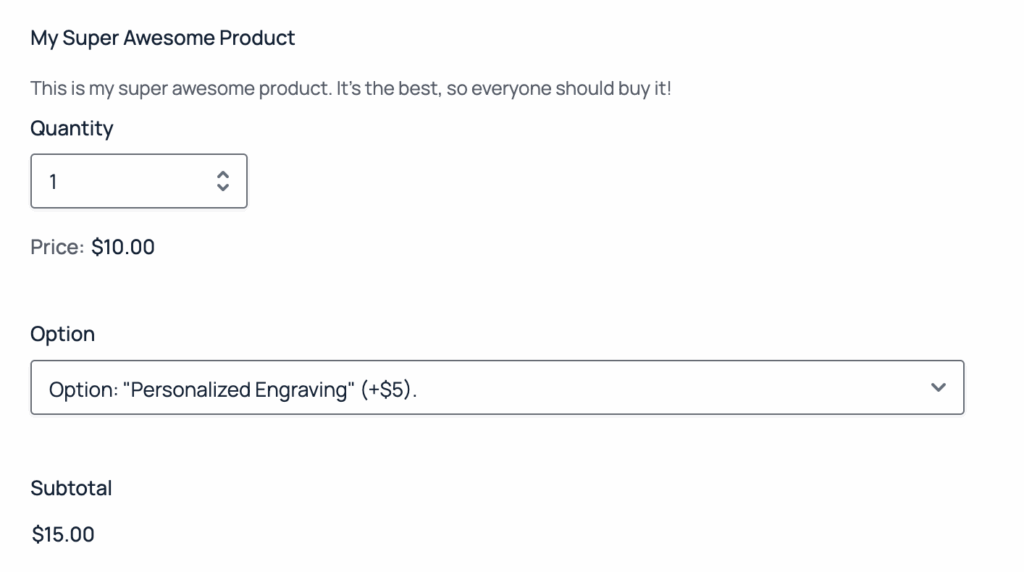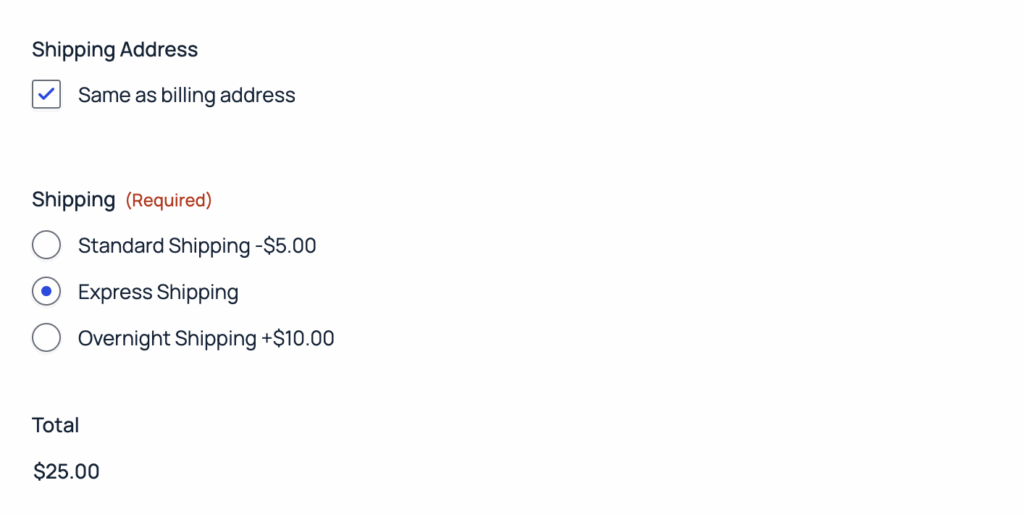Overview
Pricing fields in Gravity Forms provide a solution for incorporating pricing and calculations into your forms, enabling you to create order forms, quote generators, or donation systems without requiring a dedicated eCommerce platform.
This guide explains the core Pricing fields, including their purpose and interactions It also covers common use cases, limitations, and links to related documentation and third-party solutions, serving as a complete reference for leveraging pricing fields effectively.
Core Pricing Fields
The following table summarizes the core pricing fields, purpose, key features, and settings.
| Field | Purpose | Key Features |
|---|---|---|
| Product | Defines an item or service with a fixed or user-specified price. | It supports Number, Drop Down, or Hidden inputs and calculates line-item totals. |
| Option | Adds selectable add-ons or modifiers to a Product, adjusting its price. | Links to a Product |
| Quantity | Specifies the number of Product units, multiplying the adjusted price. | It supports single Products, Drop-downs, radio buttons, user-defined prices, and Calculations. |
| Shipping | Adds a shipping cost to the form’s total, fixed or based on user selection. | It supports single method, drop-down, or radio buttons; it links to the form’s total. |
| Total | Displays the sum of all pricing elements (Products, Options, Quantities, Shipping). | It supports single method, drop down, or radio buttons; it links to the form’s total. |
Interactions Between Pricing Fields
Note: The Product field is the only required pricing field because it sets the base price for an item or service, and is the foundation for all pricing calculations. The Option, Quantity, Shipping, and Total fields are all optional.
The pricing fields in Gravity Forms work together to create a structured pricing system within a form. The Product field establishes the base item or service and defines its initial price. The Option field adjusts this price based on user selections, such as add-ons or discounts, which modify the Product’s base cost.
The Quantity field multiplies the adjusted Product price (base price plus options) by the selected quantity to calculate the line-item total. The Shipping field adds a fixed or user-selected shipping cost to the calculation.
The Total field sums all: any additional components, such as taxes or discounts (via add-ons), to generate the final amount displayed in the form.
Example
| Field | Details | Calculation |
|---|---|---|
| Product | My Super Awesome Product ($10 base price) | $10 |
| Option | Personalized Engraving (+$5) | $10 + $5 = $15 |
| Quantity | 1 | $15 × 1 = $15 |
| Shipping | Standard Shipping ($5) | $5 |
| Total | Subtotal + Shipping | $15 + $5 = $20 |
Product field with a base price of $10 and Option field.

Shipping field and Total field.

Common Use Cases
- Bulk Order Forms: Handle large orders with Quantity fields and clear subtotal displays.
- Donation Forms: Use a User-Defined Price for flexible donation amounts, with a Total for confirmation.
- Event Registrations: Offer tiered pricing via drop-down products and quantities for group tickets.
- Membership Forms: Offer tiered membership levels with discounts via negative option pricing.
- Quote Generators: Calculate and email quotes for services or products based on user inputs.
- Service Requests: Compute pricing for custom services (e.g., repairs) using calculations.
- Surveys with Pricing: Use conditional logic to display costs after the survey based on responses.
These use cases highlight the versatility of pricing fields for non-eCommerce applications.